Barbara Sosson: Sensuous Shapes & Mimicry
Q & A with Miriam Seidel and Barbara Sosson
February 2022
Q & A with Miriam Seidel and Barbara Sosson
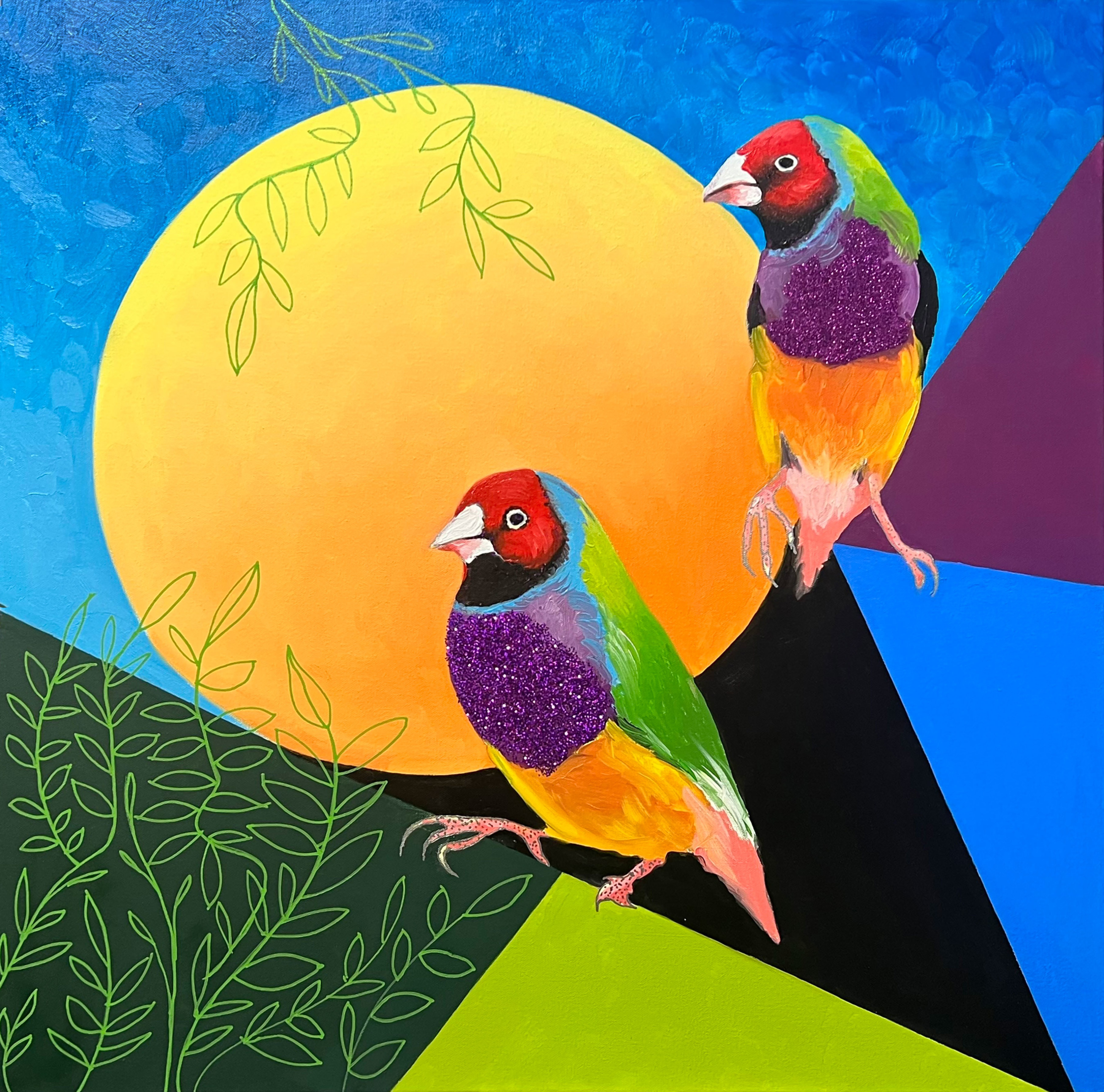
Cubist Parrot Finches, 2023, oil on canvas with spot glitter & mirror marker, 30" x 30"
Miriam Seidel: Were you making art steadily through the years when you were a busy graphic designer, or were there times when you had to set it aside?
Barbara Sosson: I never ever stopped painting. I always had a separate professional studio. Back then, I painted on the weekend. Many nights I worked until 4 a.m. during the week, so I could do that. Right now, it’s the opposite. I paint five days a week and I do design work on the weekend. And I always showed—I had two former solo shows at Gross McCleaf in 1982 and 1983. Estelle Gross, the original owner, invited me to show my Central Divide Series, a two-year series of large Sennelier pastels framed in custom Plexi boxes.
MS: So this show is a kind of homecoming for you. Let’s talk about your newest series that appears in this show. How did you find your way to the motif of birds?
BS: I read an article about how the cells in the birds’ skin create the patterns that form their plumage designsBS: I read an article about how the cells in the birds’ skin create the patterns that form their plumage designs.
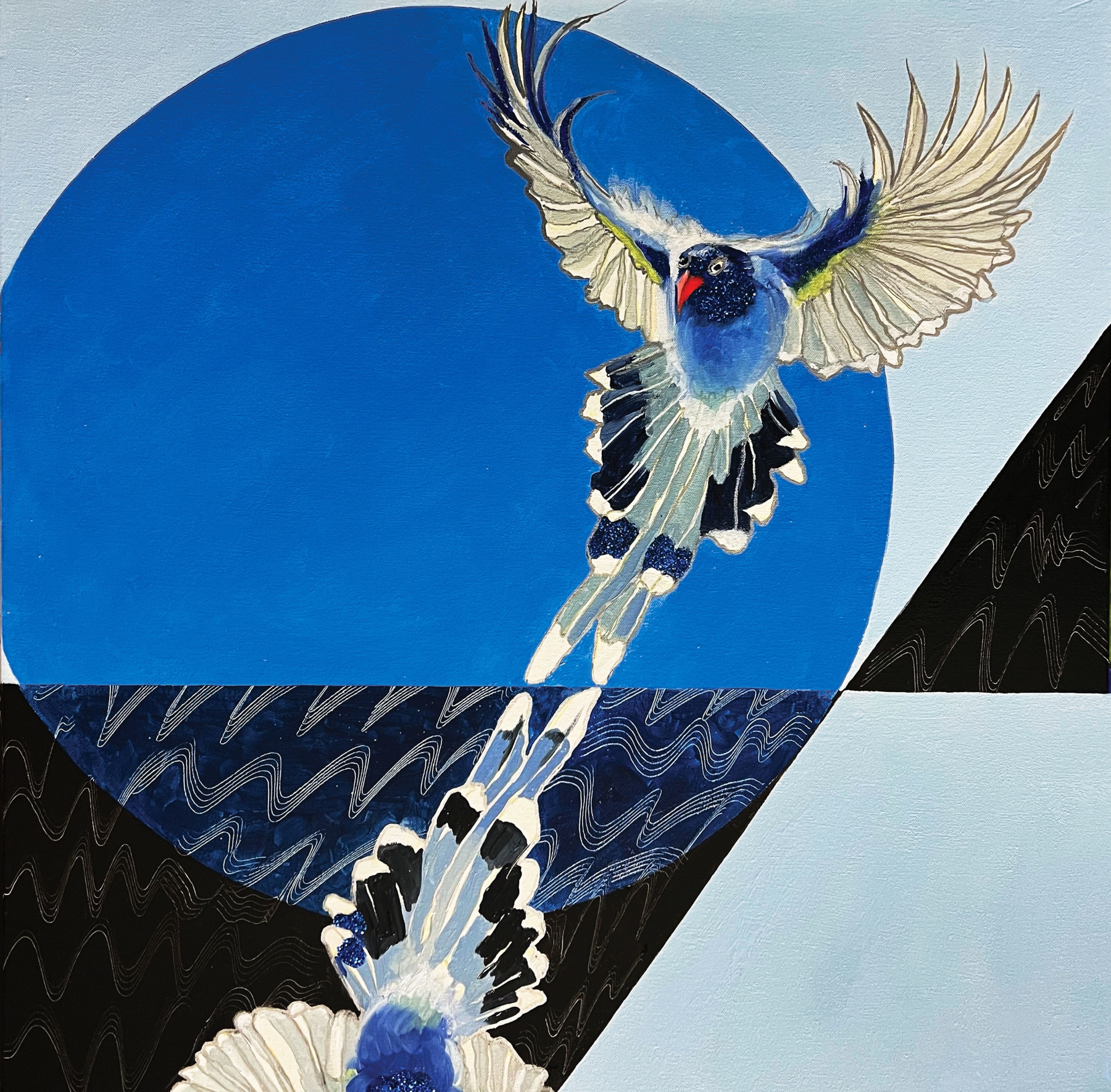
Magpie & Blue Moon, 2023, oil on canvas with spot glitter & mirror marker, 30" x 30"
BS: I thought that was amazing; the idea that they are mimicking their environment for camouflage, to help them survive.
MS: So did the glitter in the series come about because of the iridescence of their feathers?
BS: Yes. I started using more glitter in specific areas—I think of it as spot glitter. I’m also using oil and mirror markers that allow me drawn cleaner graphic lines as opposed to a brush line.
MS: What strikes me the most about these new paintings is that you’re bringing everything in, in terms of technique. You’ve got every kind of mark you can make. You’ve got hard opaque color, you’ve got drips, you’ve got these frothy gestural areas. You seem to be having a lot of fun.
BS: Not exactly fun—but I like to think of certain creative passages as pleasurable activities.
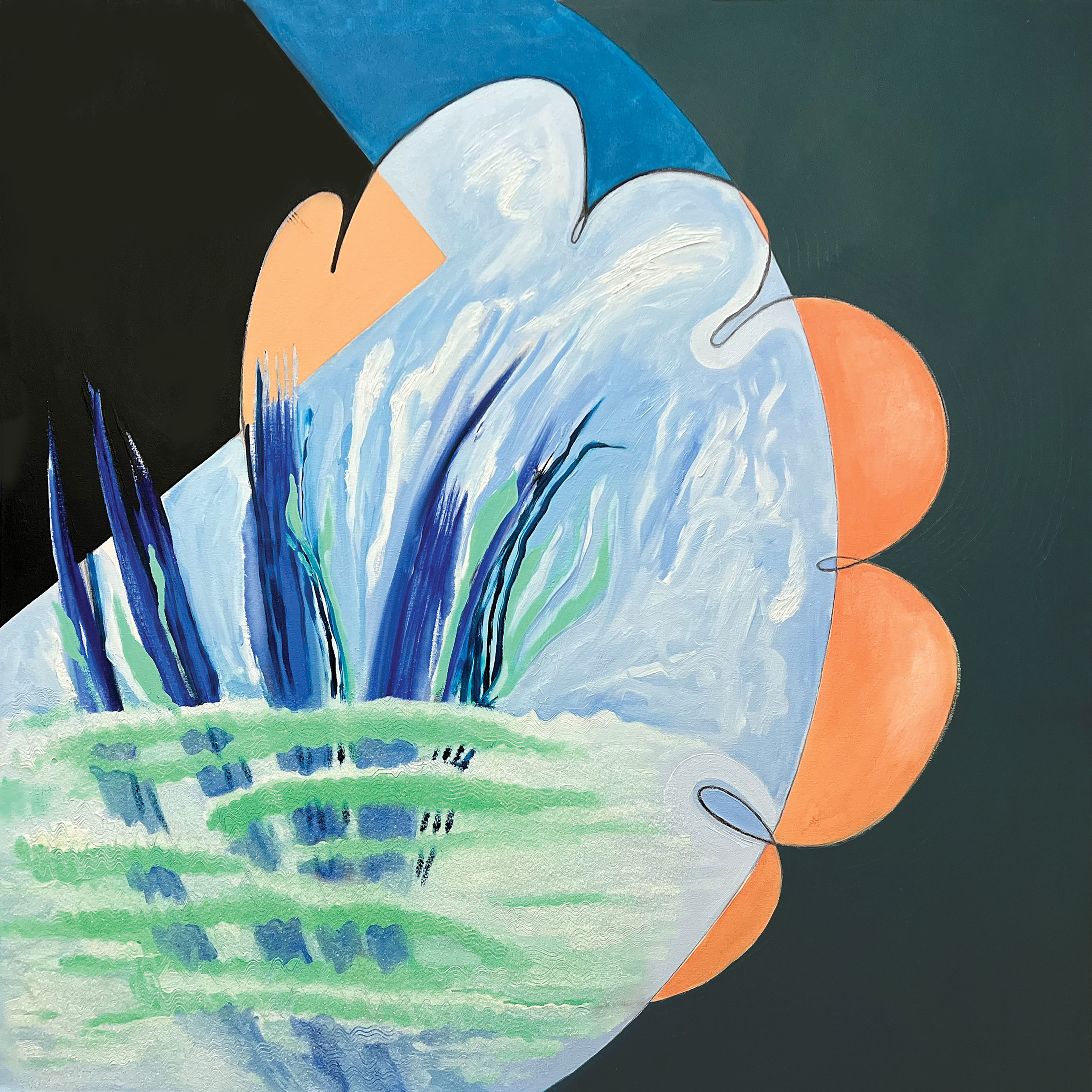
Chills, 2022, oil on canvas with white glitter, 48" x 48"
BS: These release dopamine which creates my positive outlook on life and I like being happy. I even tried to put real feathers onto the canvas but the gluing didn’t quite work out. There’s also this reoccurring moon-shape that I like for an environmental background or stage set.
MS: Yes, you’ve got a lot of big shapes in play around the birds.
BS: Well, I’m a person who likes working big. I’m an arm, not a wrist painter.
MS: There’s also a sort of hard-soft thing going on here.
BS: I love that hard-soft contrast. I think it came from my knowledge of hard-edged painting. As a designer, I designed many of the catalogs for artists like Edna Andrade, of the Hard Edged school who worked with graphic hard shapes. However, I also was exposed to the expressionistic drippers too!!
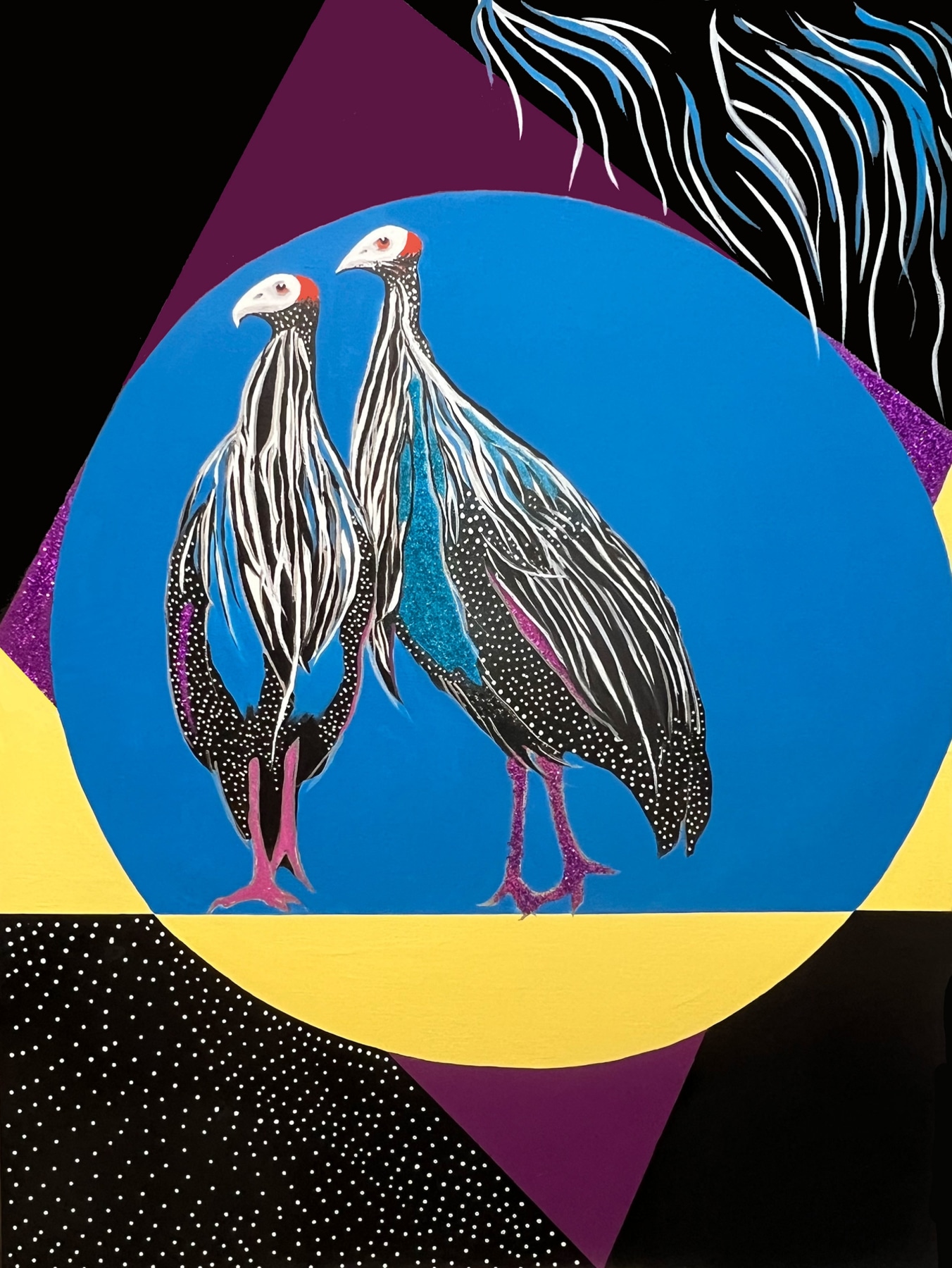
Guinea Fowl, 2023, oil on canvas with splot glitter & mirror marker, 48" x 36"

Grass Reflections, 2022, oil on canvas with mirror marker, 30" x 30"
MS: Let’s talk more about another duality that runs through your work: your movement between abstract and representational work.
BS: I do go back and forth, but not overnight—over a period of a few years I migrate between non-objective and realist schools, even using underpainting, which I love to do. Like in my Garden Bouquet series of 2011 to 2015, and the more recent Botanical Garden series of 2019 to 2022. I used underpainting during both of those series.
MS: You must have learned how to do underpainting at PAFA [The Pennsylvania Academy of the Fine Arts], when they taught traditional painting techniques.
BS: Yes, I started painting very traditionally. I attended the Academy summer classes in my 11th and 12th years of high school. When I got my Cresson [the Cresson Traveling Scholarship, a student award at PAFA] in 1966, I had been painting life-sized nudes that looked like Ben Kamihira’s work [longtime PAFA teacher].
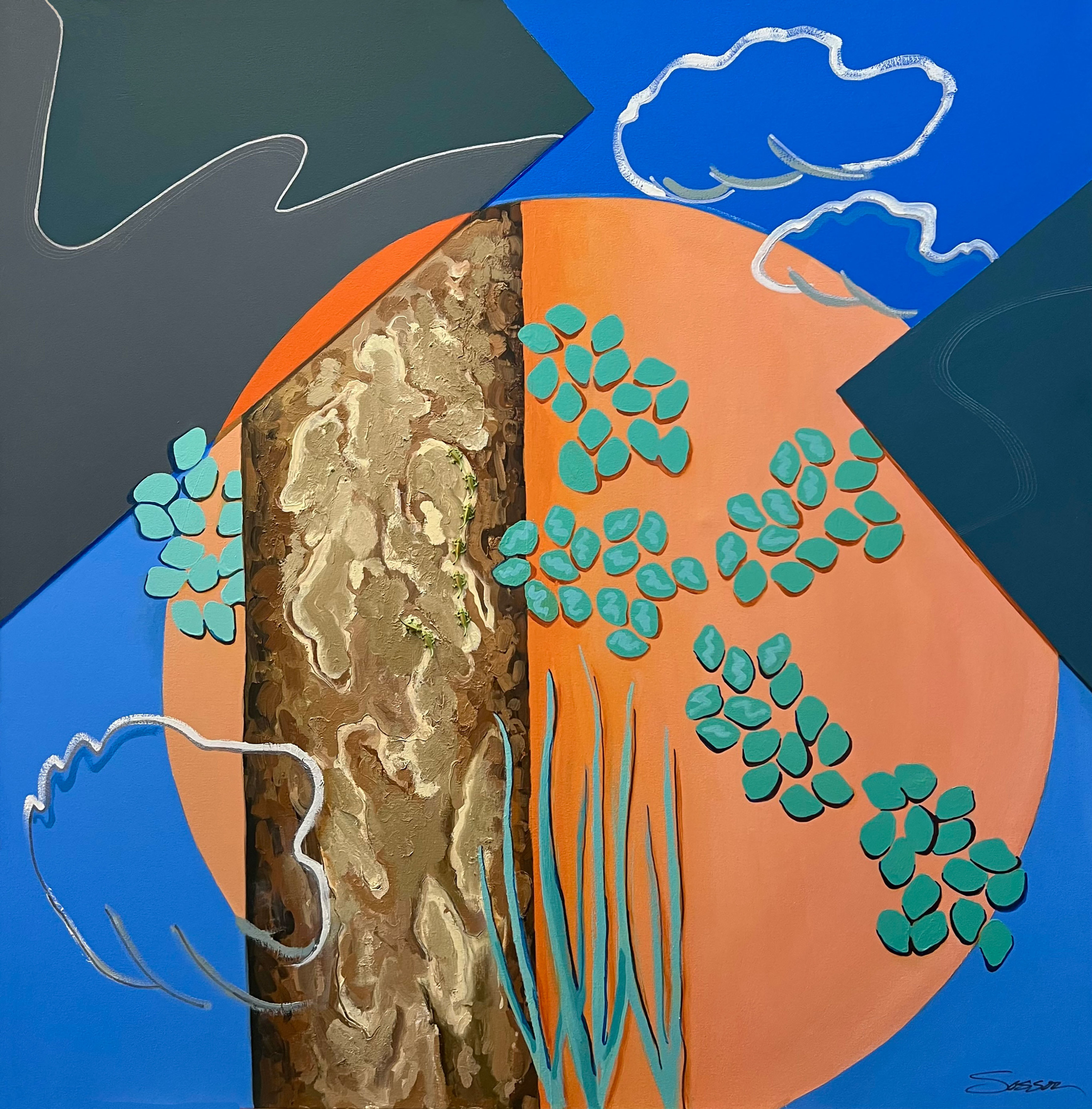
Something To Hold Onto, 2022, oil on canvas with rubber lizards, 48" x 48"
BS: The Cresson allowed me to travel. I spent four full months roaming around Europe, at age 21, going every day to a museum. And I fell in love with the Stedelijk Museum in Amsterdam, both the modern structure of it and the art. And something clicked all of a sudden. When I came back to my fourth year at PAFA, I said to myself, I’m going to go abstract. One of my teachers, Walter Stuempfig, warned me, “You’re wasting your talent.” Other instructors were encouraging, like Hobson Pitman. Jimmy Lueders steered me to the work of various contemporary artists because he understood what I was starting to do.
MS: Just before the pandemic, you were experimenting with pure abstraction, using techniques that you’ve returned to in the bird paintings. Then, for two-and-a-half years, during COVID, you shifted back to a more representational approach with your Botanical Garden series.
BS: Yes, that’s pretty accurate...
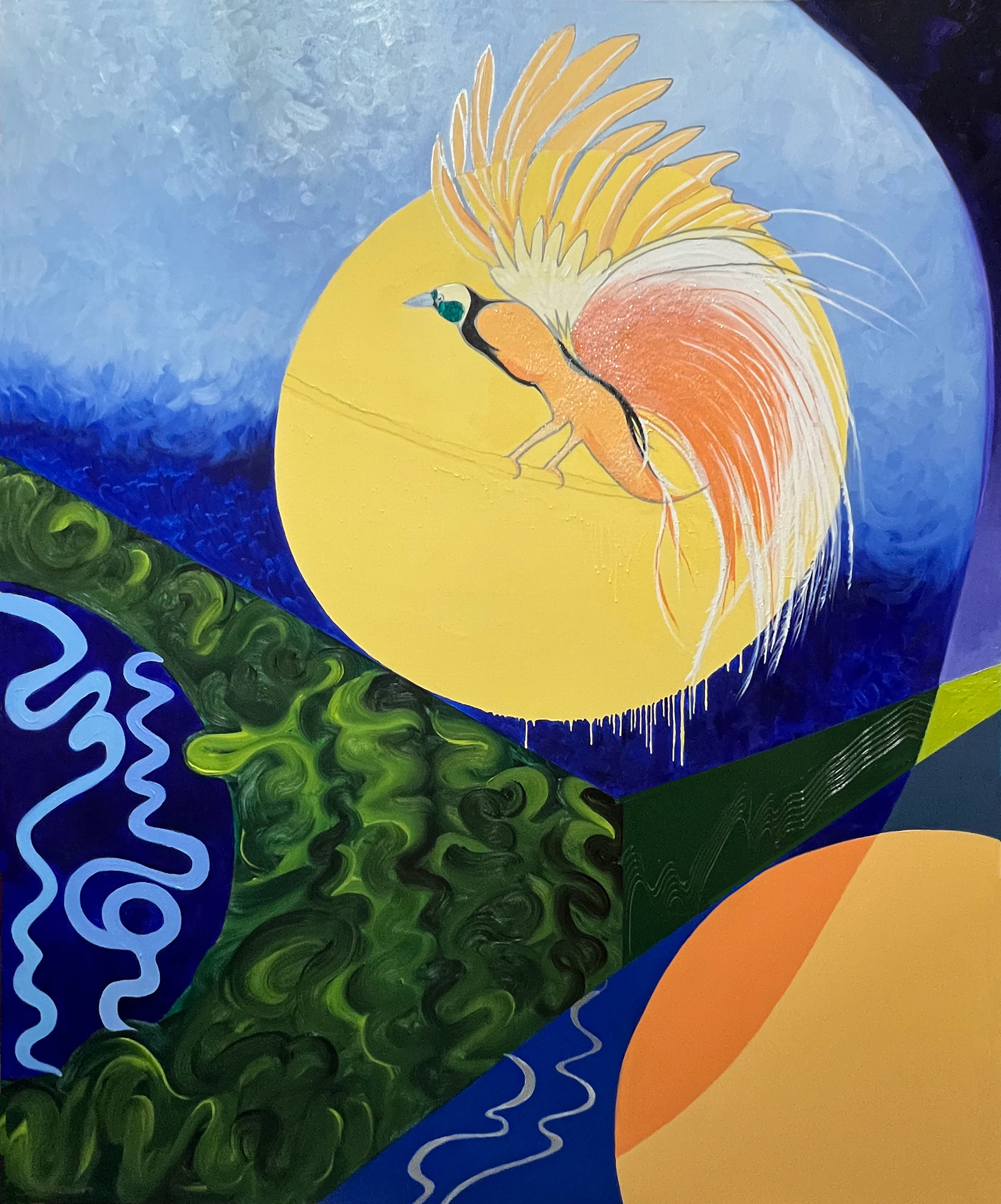
In Heat, 2023, oil on canvas with splot glitter & mirror markers, 72" x 60"
BS: ...I went up to the New York Botanical Gardens a few times, and I took shots of things I thought would make interesting paintings. I then put them into my computer and rearranged their compositions. Then I vectorized those composite images in Adobe Illustrator. I had them printed them out, life size, and those prints became the “models” I worked from by eye. But even in those paintings, certain elements like the treatment of shadows on the water at dusk became more and more abstract in the final works.
MS: I’d like to ask you if there’s any connection between your many years of graphic design work and your painting?
BS: Yes, but not in the way you’d think. What did I do for my entire career? I looked at art. I was designing many catalogs for PAFA, for the Woodmere Museum, the Delaware Art Museum, the Union League, ICA, galleries and hundreds of artists and one on collections at Columbia University. I didn’t do a lot of logos, but I do love typography, but I don’t use it in my paintings.
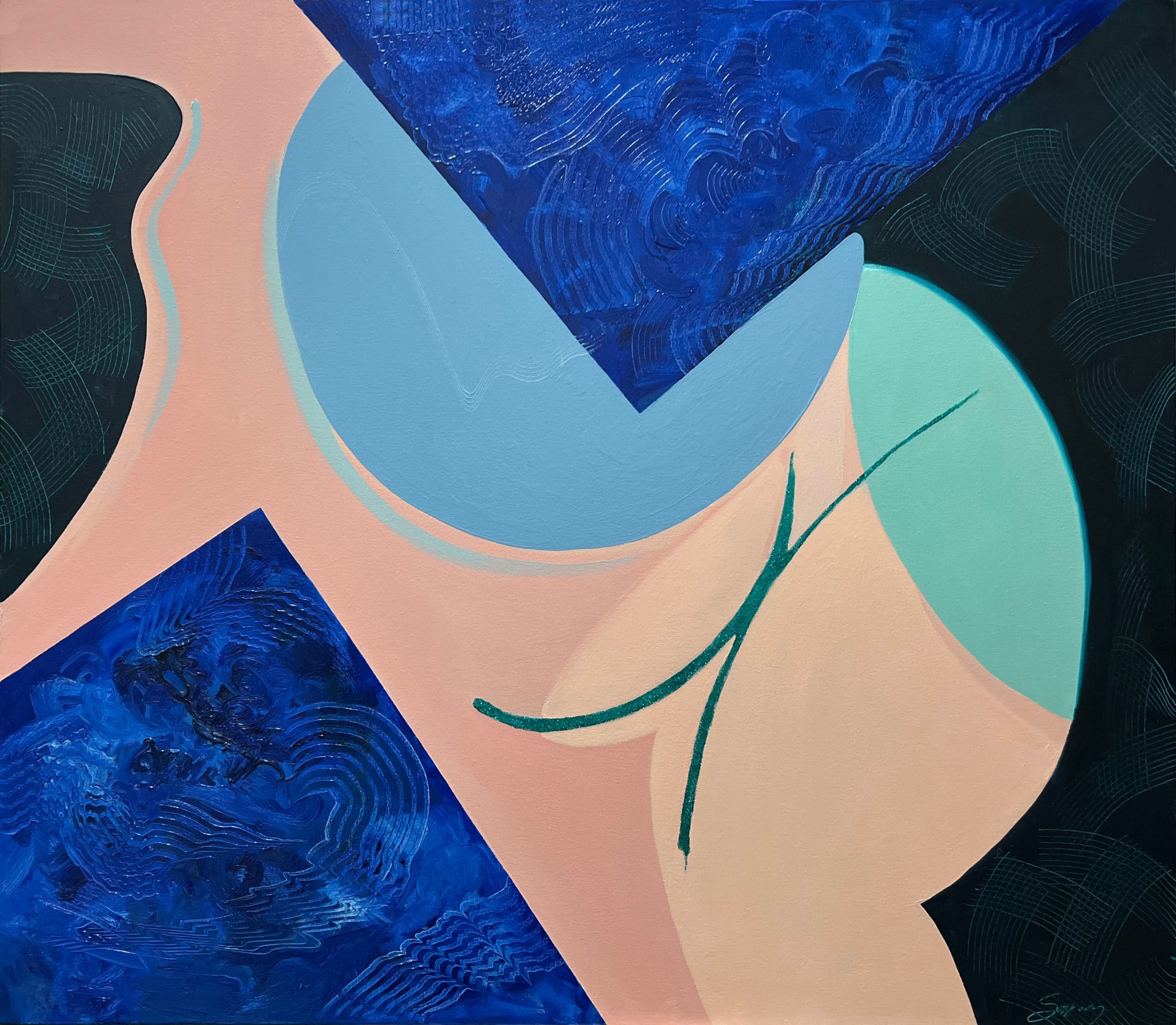
Butt Of Course, 2022, oil on canvas with green glitter, 40" x 46"
MS: So, during your entire design career day job, you were looking at art.
BS: Yes, I looked at art every day. And closely—I had to color-correct it, working at first from 4 by 5-inch color transparencies that I scanned into files for print and later with camera jpegs. I was looking at how color relationships worked, and how other artist’s compositions worked.
MS: And in graphic design, there’s constant visual decision-making.
BS: Yes, just like in painting. Artists are daily decision-makers!